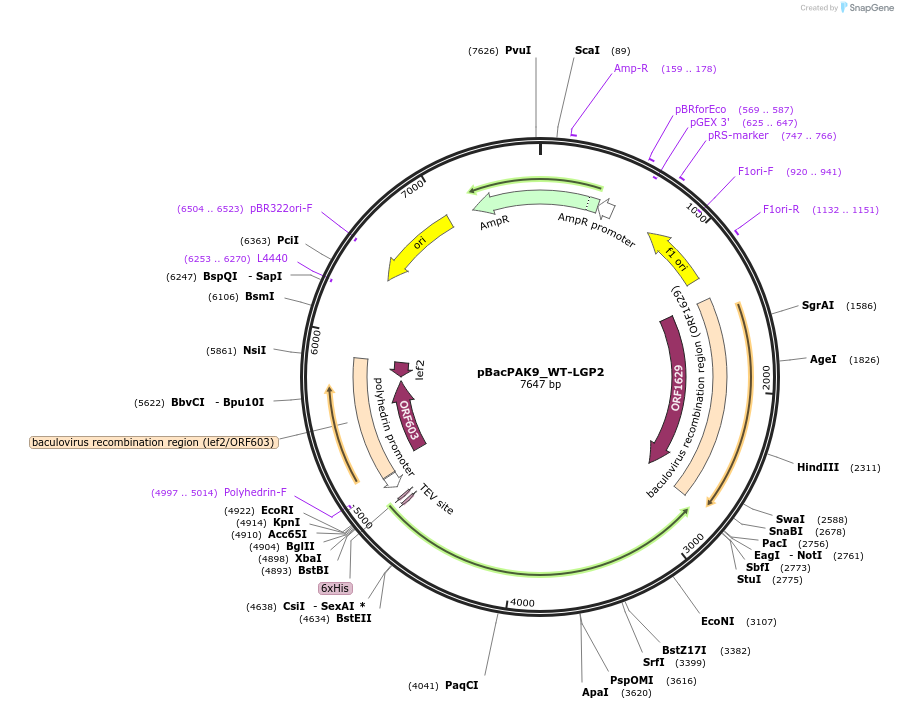pBacPAK9_WT-LGP2
(Plasmid
#248165)
-
PurposeExpresses full-length human LGP2 in sf9 insect cells
-
Depositing Lab
-
Sequence Information
Ordering
| Item | Catalog # | Description | Quantity | Price (USD) | |
|---|---|---|---|---|---|
| Plasmid | 248165 | Standard format: Plasmid sent in bacteria as agar stab | 1 | $89 | |
Backbone
-
Vector backbonepBacPAK9
-
Backbone manufacturerTakara Co., Ltd.
- Backbone size w/o insert (bp) 5538
- Total vector size (bp) 7647
-
Vector typeInsect Expression
Growth in Bacteria
-
Bacterial Resistance(s)Ampicillin, 100 μg/mL
-
Growth Temperature37°C
-
Growth Strain(s)DH5alpha
-
Growth instructionsFor plasmid amplification, grow in DH5α; for protein expression, use SF9 insect cells, which should grow between 27 and 28 °C.
-
Copy numberUnknown
Gene/Insert
-
Gene/Insert nameDExH-box helicase 58 (DHX58)
-
SpeciesH. sapiens (human)
-
Insert Size (bp)2035
-
Entrez GeneDHX58 (a.k.a. D11LGP2, D11lgp2e, LGP2, RLR-3)
- Promoter Polyhedrin
-
Tag
/ Fusion Protein
- 6xHis (N terminal on insert)
Cloning Information
- Cloning method Other
- 5′ sequencing primer TCTAGATTCGAACTCATGGGCAGCAGCCATCATC
- 3′ sequencing primer CGCCCTGCAGGCCTCTCAGTCCAGGGAGAGGTCCG
- (Common Sequencing Primers)
Terms and Licenses
-
Academic/Nonprofit Terms
-
Industry Terms
- Not Available to Industry
Trademarks:
- Zeocin® is an InvivoGen trademark.
These plasmids were created by your colleagues. Please acknowledge the Principal Investigator, cite the article in which the plasmids were described, and include Addgene in the Materials and Methods of your future publications.
-
For your Materials & Methods section:
pBacPAK9_WT-LGP2 was a gift from Smita Patel (Addgene plasmid # 248165 ; http://n2t.net/addgene:248165 ; RRID:Addgene_248165) -
For your References section:
Unraveling blunt-end RNA binding and ATPase-driven translocation activities of the RIG-I family helicase LGP2. Lee KY, Craig C, Patel SS. Nucleic Acids Res. 2024 Jan 11;52(1):355-369. doi: 10.1093/nar/gkad1106. 10.1093/nar/gkad1106 PubMed 38015453



